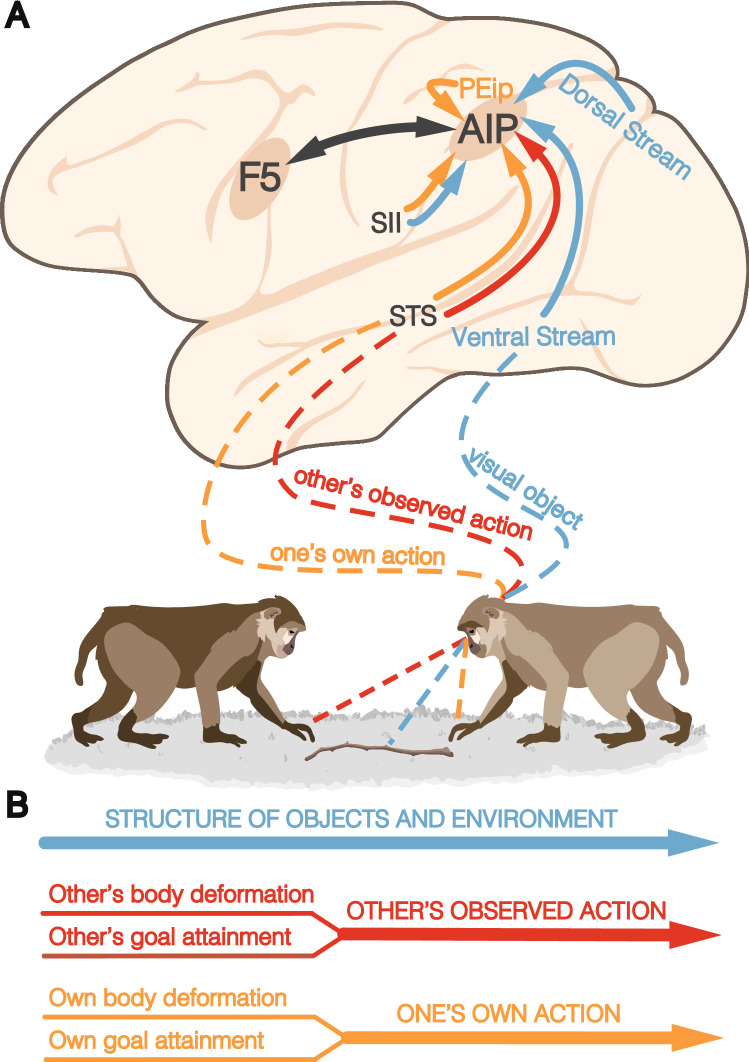Fig. 2.
Convergence of visual objects, observed actions, and own hand visual and proprioceptive signals in PPC territories devoted to manipulative actions. A Own action planning benefits from (1) motor affordances provided by the 3D structure of objects and the environment (blue), (2) social affordances provided by others’ observed actions (red), (3) own actions’ visual and somatosensory/proprioceptive feedback from the subject’s body (orange). Distinct anatomo-functional visual components of observed actions can be identified in the goal-attainment signals (rostral STS) and body movement signals (middle STS) concerning the observed actions of others, which are paralleled by the analysis of visual/proprioceptive feedback from the subject’s own actions (conveyed by the STS, PEip, SII, and F5, particularly concerning haptic information about the manipulated object). B Schematic view of the different signals that contribute to the encoding of the physical properties of objects and the environment, the subject’s own actions, and others’ actions. PEip intraparietal area PE, SII secondary somatosensory cortex, STS superior temporal sulcus

